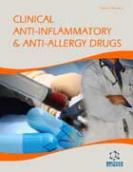Abstract
Background: Omalizumab is a monoclonal anti-IgE antibody approved for the treatment of severe allergic asthma. There is increasing evidence in the literature of its usefulness in other allergic conditions such as chronic urticaria and nasal polyposis. Methods: Here in, we report a prospective case series of 52 adult patients in a tertiary university hospital, Allergy and Immunology Clinic: 36 with severe asthma, among them 6 with associated nasal polyposis, 2 with associated hypereosinophilia in the range of 25% not explained by other etiologies, and one had associated atopic dermatitis. Fourteen with chronic urticaria (CU) and two with isolated nasal polyposis were also treated with Omalizumab. The dose given for severe asthma and nasal polyposis was according to the dosing chart of weight and total IgE. The dose given for severe asthma and nasal polyposis was according to the dosing chart of weight and total IgE. The dose given for chronic urticaria was 300mg SC every 4 weeks. We assessed the clinical benefits after 6 and 12 months of treatment. We also evaluated clinical improvement and side effects in particular incidence of parasitic infections. Faeces sampling were undertaken at baseline and during the treatment period only if symptoms occur. Results: After 6 months of treatment, 32 asthmatic patients had major improvement, four patients had partial improvement but all of them stopped oral corticosteroids. Ten patients had complete remission of chronic urticaria off any medication, three had partial improvement withdrawing steroids but still requiring anti-histamines, and one patient had no response and stopped Omalizumab at 6 months. Patients with nasal polyposis stopped nasal steroids and recovered the sense of olfaction after 6 months of therapy and completed one year of treatment. There was no effect in the case of the patient with atopic dermatitis. The major improvement noted after 6 months of treatment persisted at 1 year of follow up. Two patients (4%) developed pneumonia after the third month of treatment, eight patients (15%) developed fatigue and mild pain in lower extremities on the day of injections, four patients (8%) had mild shortness of breath with 40 minutes of surveillance treated with 2 puffs of ventolin. Only one patient (1/52 or 2%) had an active parasitic infection EntamoebaHistolytica detected after diarrhea, pruritis and acute eosinophilia, during the third month of treatment with Omalizumab, requiring treatment. Conclusion: This is the first case series study done in Lebanon. The efficacy and incidence of side effects is consistent with other recently published series and studies. Despite a prevalence of 12.4% of intestinal parasites in the Lebanese population, the incidence of parasitic infections in our population receiving Omalizumab was not significant (p>0.05).
Keywords: Asthma, eosinophils, nasal polyposis, omalizumab, prasites, urticaria.
Graphical Abstract
 36
36

